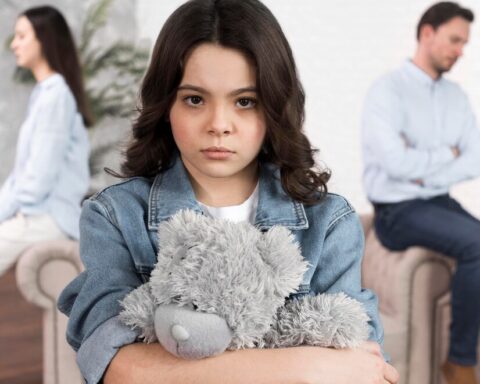Juvenile law is a specialized area of law that is entirely focused on the protection, care, and development of minors. This area of law encompasses a broad range of regulations and measures—from child protection and youth care to youth probation and protective measures—and plays a crucial role in situations where the safety and well-being of children are at stake. In complex family circumstances, such as divorces or the dissolution of relationships, it is essential that all decisions regarding the care and upbringing of children align with the principles of juvenile law. This legal field is dedicated to ensuring the rights of children are safeguarded and that every measure, whether taken through the court system or through an amicable arrangement, always serves the best interest of the child.
1. The Scope of Juvenile Law
Juvenile law covers all aspects of the protection and development of minors. This includes not only procedures for child protection and youth care but also regulations concerning youth probation and the application of protective measures when a child is in an unsafe or concerning situation. The core principle of juvenile law is based on the notion that minors, due to their vulnerable position, have the right to a safe and stimulating environment. All laws and regulations in this domain aim to ensure that the interests and rights of the child are always prioritized, regardless of the circumstances or the complexity of the family situation.
2. Child Protection and Youth Care
Child protection and youth care form the backbone of juvenile law. Child protection focuses on situations where the safety, health, or development of a child is seriously endangered. In such cases, governmental agencies, such as the Child Protection Board, may intervene by implementing protective measures. Youth care is broader in scope and provides support to families to prevent problems from escalating. This can include assistance with parenting issues and organizing professional guidance. Both disciplines work closely together to ensure that interventions are not only reactive but also preventive, so the child’s development is optimally supported.
3. The Principle of the Best Interests of the Child
The principle of “the best interests of the child” is central to juvenile law. This means that every decision—whether made by the court, social services, or through amicable arrangements—must primarily focus on what is most beneficial for the child. This principle forms the basis for all measures and interventions in juvenile law. In practice, this means that decisions are not only based on the child’s current situation but also on the future possibilities for stable and safe development. Factors such as the emotional bond with both parents, living conditions, school environment, and overall quality of life are taken into account. This results in a holistic picture of what is best for the child, ensuring that measures taken contribute to a healthy and safe upbringing in both the short and long term.
4. The Role of the Child Protection Board
The Child Protection Board plays a central role within juvenile law. This body acts as an independent and expert advisory body that intervenes when there are serious concerns about the safety and well-being of a child. The Board conducts extensive investigations, gathers information, and advises the court and other agencies on the necessary measures. By collaborating with social workers, psychologists, and medical experts, the Child Protection Board can form an objective and comprehensive picture of the situation the child is in. The Board’s advice is highly influential in legal procedures and is often decisive in determining the final decision regarding protective measures, such as supervision or removal from the home. This ensures that the voice of the child and its specific needs are heard in a professional and independent manner.
5. Legal Procedures and Measures in Juvenile Law
When a child’s situation is seriously threatened, significant legal proceedings may be initiated. This may lead to measures such as supervision or removal from the home. These proceedings take place in a judicial context, with the judge playing a central role. The judge weighs all gathered information, including reports from the Child Protection Board and other experts, and decides which measure is best for the child. In addition to these protective measures, juvenile law also includes procedures for youth probation, which focuses on guiding juvenile delinquents or children in high-risk environments. Each of these procedures is closely tied to the principles of juvenile law, with the starting point always being that the well-being and rights of the child come first.
6. Cooperation and Preventive Strategies
An important aspect of juvenile law is the collaboration between different agencies and professionals to ensure the protection of the child. In addition to legal and government agencies, schools, healthcare providers, and social organizations play a crucial role in identifying problems and offering support. Preventive strategies, such as early intervention and intensive youth care programs, can prevent situations from escalating into significant legal measures. The goal is to build a network of care and support where every child has the opportunity to grow up in a safe and stimulating environment. This multidisciplinary approach requires continuous evaluation and coordination between all parties involved, ensuring that protective measures can be flexibly and timely adjusted to the changing circumstances of the child. This not only prevents immediate harm but also works towards a sustainable improvement in the quality of life for minors.
Through this comprehensive and integrated approach to juvenile law, it is ensured that minors can grow up in a safe, protected, and stimulating environment. Prioritizing the best interests of the child, along with the involvement of specialized bodies such as the Child Protection Board, ensures that every measure is carefully considered. This guarantees that both short- and long-term decisions optimally safeguard the rights and well-being of the child, even in the most complex and impactful situations.


